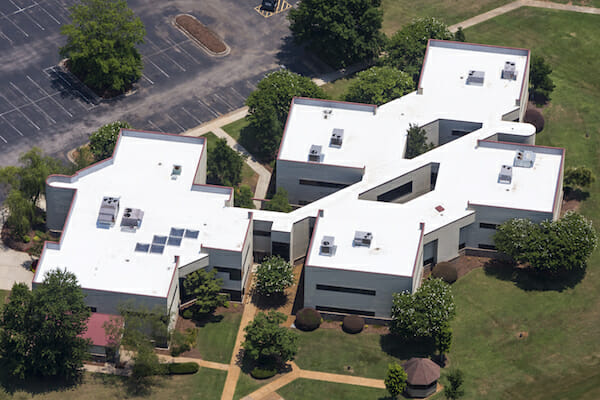Property owners or managers could be liable for any damage or injuries that occur on their properties or worksites. Thus, it’s vital that they not only understand how they can influence safety on the job site, but also why it’s vital to hire a contractor who is safety conscious. By ensuring safety at the job site, diligent, responsible contractors do more than just look out for the health and well-being of their workers. Strong safety measures ensure efficient work and reduce the probability that either the owner or the contractor will be subject to costly legal repercussions should a problem occur. It all starts with analyzing and communicating the potential hazards.
Safety Planning Before a Contractor is Hired
Safety starts long before the first roofer climbs up a ladder. The building owner or the building owner’s representatives should consider potential hazards and dangers in the earliest project planning stages. Any potential findings or concerns should be shared with the roofing companies that are bidding on the project.
After the Bid is Won: The Next Round of Hazard Assessment
In addition, the company that wins the bid is responsible for conducting its own due diligence. This critical step, which can make or break a project, separates the contractors who are just good from those who have spent decades building their reputations on diligence, thoughtful planning and thorough deliberation. Property owners or managers should ensure that the contractor they hire conducts this vital assessment and consistently demonstrates a commitment to safety.
Job Hazard Analysis: Mapping Out the Potential Dangers
Before work begins, the contractor will hold pre-construction meetings, which the building owner or the owner’s representatives should attend. In these meetings, all attendees should participate in a Job Hazard Analysis (JHA).
JHA meetings are far more common now than they were in previous years, and they’re making job sites safer. At JHA meetings, the contractor will identify each potential risk, item by item, and then determine how to mitigate those risks in collaboration with other participants. Common hazards that may be identified and discussed include:
- Water infiltration that is causing hazardous conditions.
- Weather networks predicting inclement weather that could threaten workers or the exposed building.
- Unsafe materials used to build the roof may be flammable or give off noxious fumes.
- Heightened risk of tools falling or construction traffic creating a hazard.
- Fall protection for the workers on top of the roof.
Diligent, experienced contractors will meet the JHA with appropriate protocols. They should ensure they have the right equipment, tools, materials and knowledge to address these issues, along with any others that may come up.
With a few rare exceptions — such as formal bids on heavy industrial manufacturing sites like automotive plants — contractors aren’t obligated to include safety planning into their bids and proposals. However, both the building owner and the contractor can protect themselves and ensure a good build by incorporating safety analysis and planning long before work begins. Building owners should relay their findings to their contractors, who incorporate that information into their own analysis during a JHA. The best way to prevent costly accidents is to mitigate hazards through early planning.

